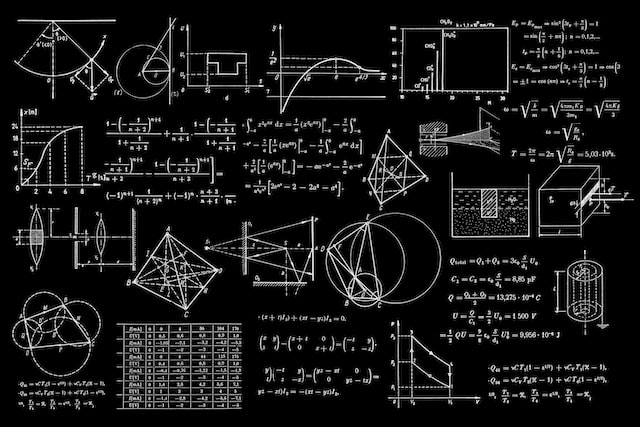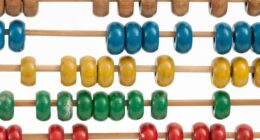Bisecting and intersecting are two different approaches to finding the point of intersection between two lines. In other words, if you bisect a line, you create two equal halves. But if you intersect two lines, you create a point where they meet.
What is bisecting?
(Photo By Wajahat Mahmood on Flickr)

Bisecting is a term used in geometry to describe the process of dividing an object into two equal parts. A line that bisects an angle is called a bisector.
Bisecting lines are lines that cut an object into two equal halves. When you bisect something, each half will have the same size and shape. To bisect an object, you need to find its centre point and then draw a line through that point.
Bisecting lines are important in geometry because they allow us to create angles of equal measure. When we want to find the centre of a circle, we use a process of bisection to find the point that is exactly halfway between the two endpoints of the diameter.
There are three types of bisector:
Angle bisector
An angle bisector is a line that divides an angle into two equal parts.
Segment bisector
A segment bisector is a line that divides a segment into two equal parts.
Perpendicular bisector.
A perpendicular bisector is a line that is perpendicular to a line segment at its midpoint.
What is intersecting?
(Photo by Denys Nevozhai on Unsplash )

In geometry, the intersection is the act of bringing two or more things together. In a more technical sense, it is the point, line, surface, or volume that results from the intersection of two or more objects.
Intersecting lines are lines that meet at a point, while non-intersecting lines are lines that do not meet.
Intersecting lines are lines that cross each other at a point, but don’t necessarily divide the object into two equal halves. When two lines intersect, they form four angles. The angles can be either right angles or oblique angles.
Bisecting Vs. Intersecting – Key differences
Bisecting and intersecting are both terms used to describe the relationship between two lines, but they have different meanings and implications.
Bisecting refers to a line or plane that cuts an object or space into two equal parts. For example, if a line bisects an angle, it divides the angle into two equal parts. Similarly, if a plane bisects a cube, it divides the cube into two equal parts.
Intersecting, on the other hand, refers to a line or plane that crosses or meets another line or plane. When two lines intersect, they meet at a single point. When two planes intersect, they form a line of intersection.
The key difference between bisecting and intersecting is that bisecting creates two equal parts, while intersecting simply indicates where two lines or planes cross each other. Bisecting is often used in geometry and mathematics to find the midpoint or center of an object, while intersecting is more commonly used to describe the relationship between two or more lines or planes.
In everyday language, intersecting is often used more broadly to describe any situation where two or more things cross or come together, while bisecting is used more specifically to describe situations where an object or space is divided into two equal parts.
What is difference between bisect and bisector?
Bisect and bisector are related terms that are used in geometry and mathematics to describe the process of dividing an object or space into two equal parts.
Bisect is a verb that means to divide something into two equal parts. For example, if a line bisects an angle, it divides the angle into two equal parts. Similarly, if a plane bisects a cube, it divides the cube into two equal parts.
Bisector, on the other hand, is a noun that refers to the line or plane that is used to divide an object or space into two equal parts. For example, if a line bisects an angle, the line itself is called the bisector of the angle. Similarly, if a plane bisects a cube, the plane itself is called the bisector of the cube.
In other words, bisect is the action of dividing, while bisector is the line or plane that does the dividing. Bisector is also used more broadly to describe any line or plane that divides an object or space into two equal parts, regardless of whether the term “bisect” is used.
While bisect and bisector are related terms that are often used together, they refer to different aspects of the process of dividing an object or space into two equal parts.
What is the difference between bisect and perpendicular?
Bisect and perpendicular are both terms used in geometry and mathematics, but they have different meanings and implications.
Bisect refers to the process of dividing an object or space into two equal parts. This can be done with a line, plane, or other geometric shape. For example, if a line bisects an angle, it divides the angle into two equal parts. Similarly, if a plane bisects a cube, it divides the cube into two equal parts.
Perpendicular, on the other hand, refers to a line or plane that is at a 90-degree angle to another line or plane. For example, if two lines are perpendicular to each other, they meet at a right angle. Similarly, if a plane is perpendicular to a line, it intersects the line at a right angle.
The key difference between bisect and perpendicular is that bisect refers to dividing an object or space into two equal parts, while perpendicular refers to the relationship between two lines or planes that meet at a right angle. Bisect can be used to create two equal parts of an object or space, while perpendicular is used to describe the orientation or direction of two lines or planes relative to each other.
Bisect and perpendicular are both important concepts in geometry and mathematics, but they have distinct meanings and applications. Bisect is used to divide an object or space into two equal parts, while perpendicular is used to describe the relationship between two lines or planes that meet at a right angle.
What are examples of intersecting?
There are many examples of intersecting in our daily lives. Here are a few:
- Road intersections: At a crossroads, two or more roads intersect, creating an intersection. Vehicles must stop, look both ways, and proceed with caution when crossing through the intersection.
- Railway crossings: When a railway line intersects with a road or other pathway, it creates a level crossing. This is where vehicles or pedestrians must wait for the train to pass before continuing on their way.
- Intersection of two lines: In geometry, two lines intersect when they meet at a single point. This is a basic concept in Euclidean geometry.
- The intersection of two circles: When two circles overlap, they create two points of intersection. These points can be used to solve various geometry problems.
- Intersection of two planes: When two planes intersect, they form a line of intersection. This is an important concept in 3D geometry.
- Intersecting paths: In nature, paths or trails can intersect, creating a junction. This can happen in parks, forests, or even in your backyard.
- Intersection of ideas: When two different concepts or perspectives meet, they can intersect and create new ideas or solutions. This is often seen in fields such as science, art, and technology.
Intersecting is a common occurrence in our daily lives, and it can take many forms, both in the physical world and in the abstract realm of ideas and concepts.
Featured Image By – Dan Cristian Pădureț on Unsplash









